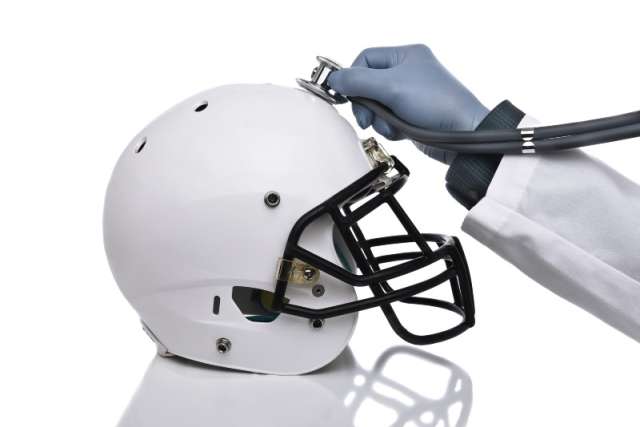Concussions can have long-term consequences, and their early detection and management is essential to full recovery. For athletes, baseline concussion testing has become a fundamental part of the assessment process by providing health care professionals with valuable information to compare and monitor an athlete's cognitive function before and after a head injury.
Baseline concussion testing is a pre-injury assessment that establishes an athlete's normal cognitive functioning and physical capabilities. It allows medical professionals to establish a personalized baseline for each athlete, providing a comprehensive picture of an individual's brain function and physical abilities.
“The concept of baseline concussion testing was to do multisystem assessments of symptoms, cognitive function, coordination and visual tracking at a time when somebody is healthy or they start playing a season,” said Christopher Giza, MD, director of the UCLA Steve Tisch BrainSPORT Program.
“The idea was that if a person suffers a brain injury, or is suspected of having an injury, we can compare the person’s performance at that time with what it was before the injury.”
The importance of baseline testing
Dr. Giza explained that baseline concussion testing was imperative for three reasons:
- Early detection: By comparing post-injury test results with baseline measurements, health care professionals can identify cognitive impairments caused by a concussion. Prompt recognition of a concussion facilitates early intervention and proper management, reducing the risk of long-term complications.
- Objective assessment: Baseline testing provides an objective measure of an athlete's cognitive abilities and physical performance. It eliminates reliance on subjective self-reporting, enabling a more accurate evaluation of an athlete's condition.
- Return-to-play decision making: After a concussion, athletes must undergo a comprehensive evaluation to determine their readiness to return to sports activity. Baseline testing results serve as a crucial component in this decision-making process, ensuring that an athlete's cognitive function has returned to its pre-injury level.
The timing of post-injury assessment is important. Sport-concussion assessment tools should be used within the first 72 hours after injury or it could make the assessment hard to determine, said Dr. Giza, a pediatric neurologist.
“If you have a headache on day one after getting your head hit, there’s a high chance that your headache is related to your head getting hit. If you have a headache four weeks after you got your head hit, but within that time you were fine, with no headaches, that headache is less likely to be associated with the hit from weeks earlier,” Dr. Giza said.
Baseline concussion testing procedures
Baseline concussion testing typically involves a combination of cognitive, balance and coordination assessments.
- Cognitive testing: This evaluates an athlete's memory, attention, reaction time and problem-solving skills. It may involve computer-based tests, such as the Immediate Post-Concussion Assessment and Cognitive Test (ImPACT), which measures various cognitive domains affected by concussions.
- Balance testing: Balance assessments determine an athlete's postural stability and equilibrium. These tests often involve standing on a firm or unstable surface with eyes open or closed, assessing the athlete's ability to maintain balance.
- Coordination and reaction time testing: These tests evaluate an athlete's motor coordination, agility and reaction time. They may include tasks such as hand-eye coordination exercises and timed drills.
Since first gaining popularity in the early 2000s, baseline concussion testing tools have been modified over the years.
“In the past, for example, the standard balance measure was static. A person stood in a certain position on a flat surface and had to maintain their posture with their eyes closed,” Dr. Giza explained. “In newer versions, we use dynamic balance, what we call ‘timed tandem gait,’ where a person has to walk heel-to-toe a certain distance, turn around and come back.”
The BrainSPORT program continues to work with all athletes as they promote brain and head safety in sports. The biggest obstacle is creating baseline tests because each individual is different and each test comes with financial costs.
“Creating baseline assessment tests is a big challenge, but the end goal — more inclusivity and sports participation in physical activity — is a good one to work toward,” Dr. Giza said.




